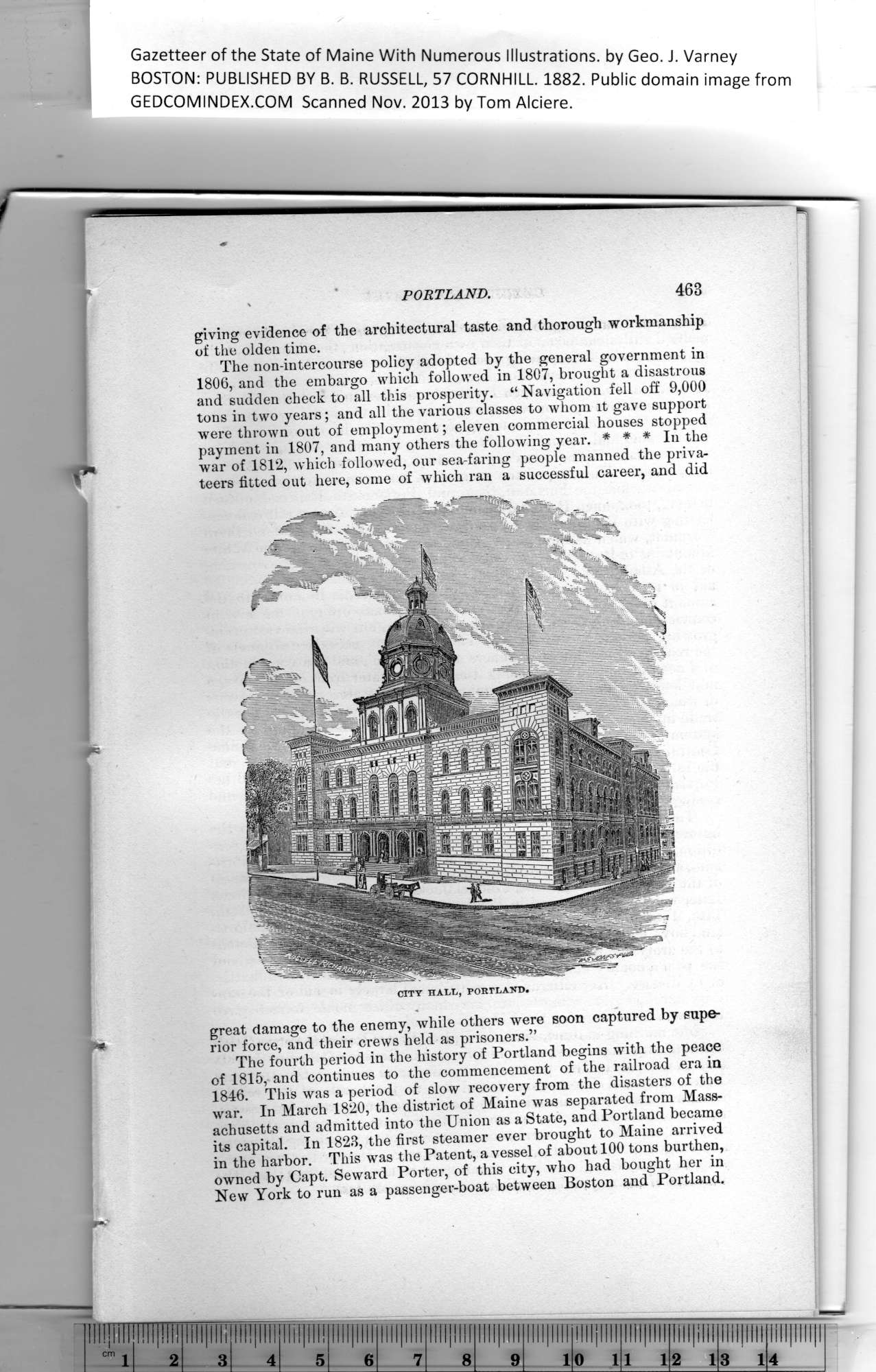|
Gazetteer of the State of Maine With Numerous Illustrations, by Geo. J. Varney
BOSTON: PUBLISHED BY B. B. RUSSELL, 57 CORNHILL. 1882. Public domain image from
PORTLAND.
giving evidence of the architectural taste and thorough workmanship
of the olden time.
The non-intercourse policy adopted by the general government in
1806, and the embargo which followed in 1807, brought a disastrous
and sudden check to all this prosperity. “Navigation fell off 9,000
tons in two years; and all the various classes to whom it gave support
were thrown out of employment; eleven commercial houses stopped
payment in 1807, and many others the following year. * * * In the
war of 1812, which followed, our sea-faring people manned the priva-
teers fitted out here, some of which ran a successful career, and did
i
great damage to the enemy, while others were soon captured by supe-
rior force, and their crews held as prisoners.”
The fourth period in the history of Portland begins with the peace
of 1815, and continues to the commencement of the railroad era in
1846. This was a period of slow recovery from the disasters of the
war. In March 1820, the district of Maine was separated from Mass-
achusetts and admitted into the Union as a State, and Portland became
its capital. In 1823, the first steamer ever brought to Maine arrived
in the harbor. This wTas the Patent, a vessel of about 100 tons burthen,
owned by Capt. Seward Porter, of this city, who had bought her in
New York to run as a passenger-boat between Boston and Portland.
PREVIOUS PAGE ... NEXT PAGE
This page was written in HTML using a program written in Python 3.2
|
